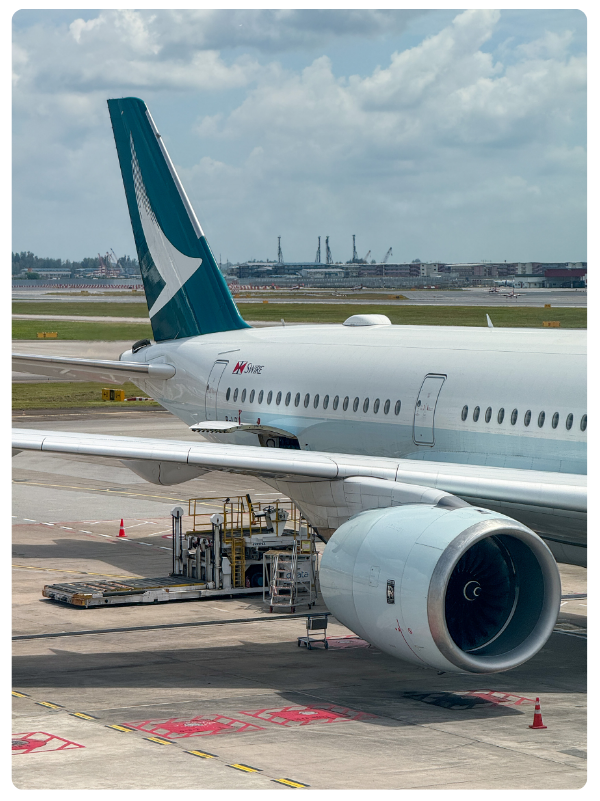
In today’s aviation landscape, data is more than a performance tracking tool. It is the foundation for strategic decisions, commercial agility, and long-term growth. As markets evolve and competition intensifies, airlines need a consistent, trusted view of where and how passengers are traveling.
That is where Direct Data Solutions (DDS) comes in. Developed jointly by IATA and ARC, DDS provides passenger traffic intelligence by combining direct and indirect ticket sales data from a broad network of contributors. This gives airlines a more complete view of market behavior, including agency performance, sales channels, and route-level demand.
Cathay Pacific has fully integrated DDS into its commercial operations, using it to align teams, guide pricing and network decisions, and measure the impact of their strategies with greater clarity. “Our company strategy is very digitally driven, very data driven,” says Andrew Lin, Global Business Development Manager. “All of our commercial decisions must be driven by concrete data support.”
All of our commercial decisions must be data driven.
Andrew’s team oversees Cathay Pacific’s commercial analytics tools, with DDS playing a key role in guiding decisions across revenue management, sales, and network planning. By providing a consistent view of passenger traffic trends and agency performance, DDS helps commercial teams base their strategies on the same set of facts. “If one part of the company is using one data source and others are using another,” Andrew notes, “they can’t talk to each other.”
With everyone working from the same source, Cathay Pacific has reduced the confusion caused by fragmented intelligence. The result is faster, more aligned decision-making—especially when evaluating new opportunities or responding to market changes.

Since adopting DDS in 2018, Cathay Pacific has strengthened its ability to make consistent, data-driven decisions across departments. By giving teams access to the same dataset, DDS supports faster, more aligned conversations around pricing, performance, and growth opportunities—especially between head office and regional/local teams. Beyond internal alignment, DDS enables Cathay Pacific to benchmark performance against the broader market. This helps the airline understand not just how it is performing, but how that performance compares to industry trends. “We want to understand the missed opportunity,” Andrew explains. “If we’re growing but the market is growing faster, we need to react accordingly.”
With access to ticketing data across routes and agencies, Cathay Pacific can track key KPIs in context, identify underperformance early and react quickly with mitigation plans, and better understand the effects of competitive shifts—such as capacity changes or evolving agency partnerships.
Cathay Pacific also uses DDS to assess the impact of our commercial strategy. When launching a new promotion or adjusting pricing, the team can monitor changes in agency performance and route-level market share to see whether the strategy is having the desired effect.
“We want to see whether the result is aligned to our expectations,” says Andrew. “It helps us understand the effectiveness of our promotion and whether it can really drive incremental revenue.” These detailed insights feed directly into future planning—highlighting what is working, where momentum is building, and where strategy needs to shift.
When Andrew Lin joined Cathay Pacific in 2019, DDS had only recently been introduced, and many teams were still relying on legacy business intelligence tools. “It wasn’t an easy process,” Andrew admits. “DDS was very new for everyone within the company.” To support adoption, Cathay Pacific brought IATA trainers to Hong Kong and organized in-person sessions for commercial teams from across its global network. These were followed by tailored use-case workshops at regional offices to demonstrate how DDS could support day-to-day decision-making.
The investment paid off. “Every team or region has several experts in using DDS now, and they train new joiners,” Andrew says. Today, DDS is fully embedded in Cathay Pacific’s operations. Data feed flows into the airline’s internal data warehouse, powering team-specific dashboards and supporting decisions across functions.
As Cathay Pacific continues to evolve, DDS is set to play an even more important role. The team is particularly looking forward to enhancements that will speed up access to insights, including faster delivery of total market estimates and more detailed segmentation options. “The enhancement roadmap is quite encouraging,” says Andrew. “Reducing the total market estimate timeline from 45 to 15 days—that’s a very positive thing.”
When asked what he would say to another airline considering DDS, Lin’s advice is straightforward: “Just subscribe. Contribute to the data so that we can see as much data as possible.”
For Cathay Pacific, DDS is no longer just a reporting tool. It is a critical part of how the airline plans, measures, and grows in a fast-moving industry.